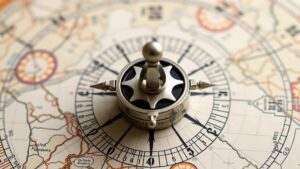Recovering Hidden Gold and Silver Hoards in Remote Mountain Cabins
Recovering Hidden Gold and Silver Hoards in Remote Mountain Cabins
The allure of hidden gold and silver hoards has captivated adventurers and historians alike for centuries. Remote mountain cabins, often linked to myths of lost treasures, provide fertile ground for exploration. This article delves into the methodologies, tools, and historical context necessary for uncovering these elusive caches, focusing on practical techniques, real-world applications, and the overarching significance of these treasures.
The Historical Context of Hidden Treasures
Understanding the historical context of hidden treasures is essential for anyone venturing into remote mountain cabins. Many of these locations served as hideouts for miners or outlaws during gold rushes or periods of societal upheaval. For example, during Californias Gold Rush in the mid-1800s, countless prospectors concealed wealth as they feared theft or loss during the tumultuous environment.
According to the U.S. Geological Survey, it is estimated that over $2 billion worth of gold remains hidden in the Sierra Nevada region alone. Such figures reflect not only the potential monetary value but also the historical narrative embedded in these treasures.
Identifying Potential Locations
Successful treasure hunting hinges on identifying locations with a high likelihood of hidden riches. Factors influencing this include geography, historical use, and documented lore.
- Geography: Cabins situated near historical mining sites or natural resources like rivers often have higher chances of containing hidden valuables. The terrains natural deposits may lead to concealed caches.
- Historical Use: Locations known for past mining activity, outlaw hideouts, or homes of notable figures should be prioritized. Researching historical records can unearth leads.
- Documented Lore: Local legends and tales passed down can point to possible locations of hidden treasures. For example, the infamous “Lost Dutchman’s Gold Mine” in Arizona remains a legend that continues to spur explorations.
Research and Preparation
Once potential locations have been identified, thorough research and preparation are crucial. This phase includes both historical research and practical readiness for the expedition.
Start by consulting local libraries or historical societies for old maps, archived photos, or documented accounts of treasure findings. Also, digital archives and databases such as the Library of Congress provide valuable resources.
In terms of practical readiness, adventurers must equip themselves with the right tools. Essential items include:
- Metal detectors: These devices can help locate buried coins or precious metal items, as they can detect different types of metals at various depths.
- Topographical maps: These are crucial for navigating rough terrains and identifying possible excavation sites.
- GPS devices: Modern handheld devices can aid in tracking locations of interest and assisting in safe navigation.
Techniques for Excavation
Excavation techniques vary from casual searching to more sophisticated archaeological approaches. It is vital to balance efficiency with respect for the environment and historical integrity.
- Surface Searching: This initial method involves casually surveying the area for visible signs of buried items, such as disturbed earth or unusual rock formations.
- Mechanical Digging: If a specific area has been identified, using shovels or small excavators can help dig deeper into the ground. This method, while effective, must be performed cautiously to avoid damaging any potential historical artifacts.
- Professional Archaeological Techniques: For those serious about recovery, employing approved archaeological methods is essential. This involves careful stratigraphic excavation, where layers of soil are removed one at a time, facilitating the documentation of any finds.
Legal and Ethical Considerations
Before embarking on any treasure recovery efforts, it is vital to understand the legal implications involved. In many jurisdictions, the discovery of treasure is subject to laws regarding ownership, reporting finds, and excavation permits.
- Ownership Laws: Typically, treasure found on private property belongs to the landowner. efore, obtaining permission is essential to avoid legal issues.
- Reporting Requirements: Certain areas require that valuable finds be reported to authorities. Not adhering to regulations can result in forfeiture of discovered items, fines, or legal action.
Success Stories and Case Studies
Several recorded cases highlight the potential success of treasure recovery in remote mountain cabins. One notable example involves an amateur treasure hunter who discovered a cache of rare coins in the Sierra Nevada foothills. This find, estimated to be worth over $100,000, underscored the opportunities present in such explorations.
In another example, a team of archaeologists in Colorado uncovered a hidden stash of silver ingots dating back to the late 1800s. Their methodical approach and respect for local regulations allowed for a successful retrieval, preserving historical context for future research.
Actionable Takeaways
Recovering hidden gold and silver hoards in remote mountain cabins can be a financially rewarding endeavor, but it also requires diligence and respect for both the environment and history. Here are some actionable takeaways:
- Conduct thorough historical research and engage with local historians.
- Prepare adequately with the right tools and permits before embarking on any expedition.
- Adopt a respectful and legal approach to treasure hunting, ensuring that all actions adhere to local regulations.
- Learn from the experiences of others by studying successful treasure hunting case studies.
To wrap up, with the right approach, dedication, and adherence to legal frameworks, the recovery of hidden treasures in remote mountain cabins is not merely a dream but a tangible possibility filled with historical significance and potential benefit.



